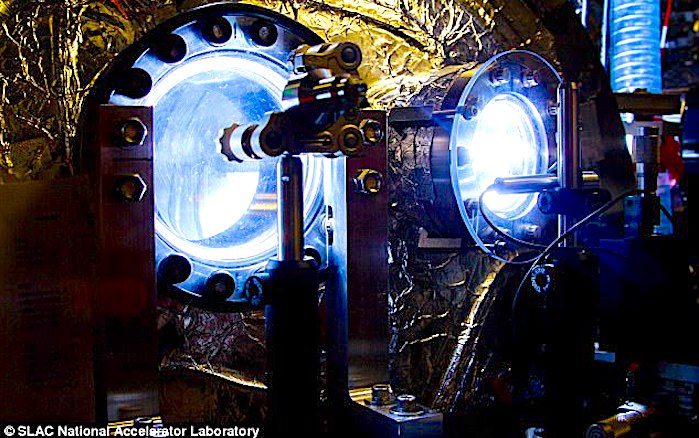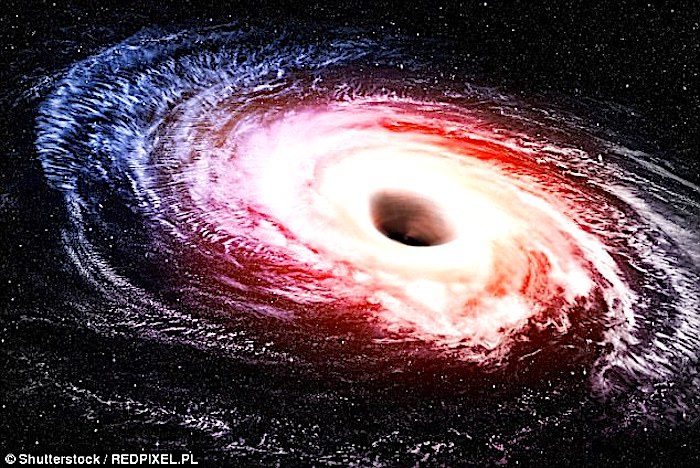
The 'molecular black hole' was created by researchers from Kansas State University, who were testing the X-ray laser on a small molecule. The single laser pulse stripped all but a few electrons out of the molecule's biggest atom from the inside out, leaving a void that started pulling in electrons from the rest of the molecule, like a black hole gobbling a spiraling disk of matter.
And within 30 femtoseconds - millionths of a billionth of a second - the molecule lost more than 50 electrons, causing it to blow up.
At the moment, the laser, called the Linac Coherent Light Source (LCLS), is used to image individual biological objects, including viruses and bacteria. The researchers hope that the molecular black hole findings will help them better plan experiments using this laser.
Daniel Rolles, who worked on the study, said:
'For any type of experiment you do that focuses intense X-rays on a sample, you want to understand how it reacts to the X-rays. This paper shows that we can understand and model the radiation damage in small molecules, so now we can predict what damage we will get in other systems.'The LCLS delivers X-rays with the highest possible energies, and records data from samples before the laser pulse destroys them.
Sebasien Boutet, co-author of the study, said:
'They are about a hundred times more intense than what you would get if you focused all the sunlight that hits the Earth's surface onto a thumbnail.'In this study, the researchers used mirrors to focus the X-ray beam into a spot 100 nanometres in diameter - this is a thousand times smaller than the width of a human hair.

And while this did happen, the process didn't stop there.

Artem Rudenko, co-author of the study, said:
'We think the effect was even more important in the larger molecule than in the smaller one, but we don't know how to quantify it yet.The researchers now hope to study more complex systems using the laser.
'We estimate that more than 60 electrons were kicked out, but we don't actually know where it stopped because we could not detect all the fragments that flew off as the molecule fell apart to see how many electrons were missing. This is one of the open questions we need to study.'
Mike Dunne, director of the LCLS, said: 'This has important benefits for scientists wishing to achieve the highest-resolution images of biological molecules to inform the development of better pharmaceuticals, for example.'



Reader Comments